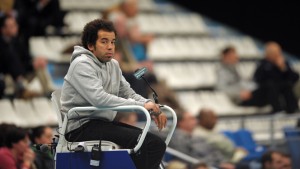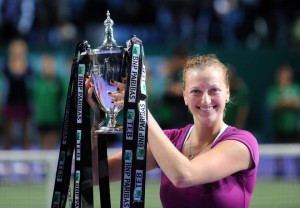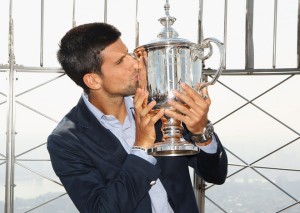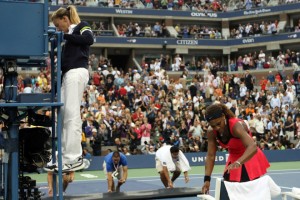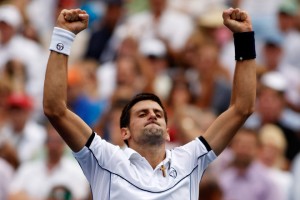I’m happy enough for Victoria Azarenka, who won her first Grand Slam singles titles, who became probably the best known player from Belarus (apologies to Max Mirnyi) and who has supplanted Caroline Wozniacki and finally given the WTA a No. 1-ranked player who also has a major title.
But when the final photo shoot was cleared away and there was time to look with a broader perspective at women’s tennis, we were left with yet another uncompetitive and unexciting women’s Grand Slam final.
This 6-3, 6-0 win over Maria Sharapova took all of one hour and 22 minutes in front of an audience that didn’t look exactly rapt with the drama of it all.
And what made this women’s final even more glaring in its lack of suspense were the two men’s semifinals played before it.
In one, Novak Djokovic had to go five sets and four hours and 50 minutes to beat Andy Murray, who played perhaps his greatest match against an elite competitor. In the other, Rafa Nadal came from a set down to beat Roger Federer in four — a match that took three hours and 42 minutes.
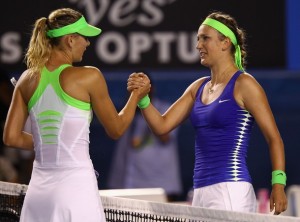 If this Azarenka pasting was an isolated episode in the recent history of women’s Slam finals, we wouldn’t be discussing how tedious it was. But it’s not, and there’s really no cogent explanation for it.
If this Azarenka pasting was an isolated episode in the recent history of women’s Slam finals, we wouldn’t be discussing how tedious it was. But it’s not, and there’s really no cogent explanation for it.
It’s just happening, and it’s too bad, because you have the feeling the WTA is going through a transition period right now while men’s tennis is becoming as exciting as it was when John McEnroe, Jimmy Connors and Bjorn Borg were at the top of their games.
How bad have these women’s finals been? Actually, we have had two better-than-average years at the Aussie Open finals before this crushing Sharapova loss.
But at the U.S. Open, there hasn’t been a split-set women’s final in 16 years — not since Steffi Graf beat Monica Seles 7-6, 0-6, 6-3 in 1995.
At the French Open, we’ve gone 10 consecutive years without a split-set women’s final. At Wimbledon, five years in a row.
At Melbourne, this makes five of the last seven years without any real drama in the final, and even Serena Williams’ split-set win in 2010 and Kim Clijsters’ split-setter a year ago didn’t roll to a nail-biting conclusion. Both women put the third set away 6-2.
But that’s OK. At least it went three set and those who attended could go home feeling good about having spent more time watching tennis than parking their cars. And at least they had some tension in the air for awhile, as the finalists steeled themselves for a third set.
Contrast that with the 2007 Australian final, where Serena Williams blew away Sharapova 6-1, 6-2. Or 2006, when Justine Henin said “no mas” and retired to Amelie Mauresmo 6-1, 2-0.
In this long list of uninspiring U.S. Open finals, not only has there not been a split-setter sicne 1995, but of the 32 sets played during that streak, only one went to a tiebreak.
I have no explanation. Perhaps you could surmise that after two weeks of Grand Slam tennis it’s hard to find two women who are physically strong or fit enough to put on a tight, gripping performance. Maybe it speaks to a general lack of competitiveness at the top of the game. I don’t know. All I do know is that men’s tennis right now is far and away more compelling than the women when you get to the Grand Slam end game.
Certainly, the women have put on some dramatic matches during the tournaments, but when you get to the final you want the kind of stuff Djokovic, Nadal, Federer and Murray have been putting on. What you don’t want to see is another anti-climactic blowout.
Charles Bricker can be reached at nflwriterr@aol.com




